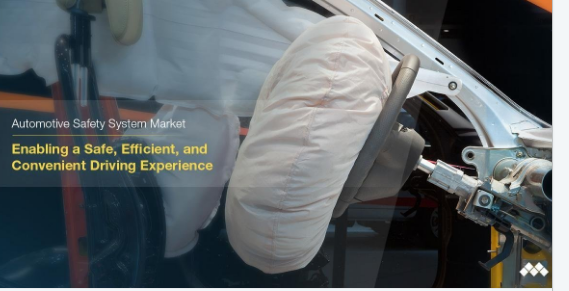The Automotive Safety System Market is estimated to be USD 82.80 billion in 2017 and is projected to reach USD 169.46 billion by 2025. The market, in terms of value, is estimated to grow at a CAGR of 9.36% from 2017 to 2025.
The government regulations pertaining to vehicle safety and the growing demand for a safer, efficient, and convenient driving experience are the key factors driving market growth.
The automotive safety system market has promising growth potential due to several factors, including the increasing demand for a safe, efficient, and convenient driving experience; rising disposable income in emerging economies; and stringent safety regulations across the globe. Owing to the high adoption rate of active and passive safety technologies, developed countries such as the US, Germany, and the UK are estimated to have a significant market share of automotive safety systems. Furthermore, Europe and North America have some of the most stringent safety regulations. For instance, in November 2014, General Safety Regulation No 661/2009 of the European Parliament and Council mandated driver seatbelt reminders and tire pressure monitoring systems in all new cars sold in Europe. Also, from 1st November 2015, all new trucks and buses were required to be equipped with advanced emergency braking systems along with lane departure warning systems.
The ecosystem of the automotive safety system market consists tier I suppliers such as Robert Bosch (Germany), Continental (Germany), Denso (Japan), Infineon (Germany), and Delphi (UK).
Download PDF Brochure @ https://www.marketsandmarkets.com/pdfdownloadNew.asp?id=112622606

Opportunities:
1 The advent of Autonomous Vehicles
2 Rising Demand for Electric Vehicles
The active safety systems are projected to be the fastest-growing segment of the automotive safety system market. Increasing demand for autonomous vehicles has also fueled the active safety system market. Active safety systems such as blind-spot detection (BSD), advanced emergency braking system (AEBS), and lane departure warning (LDW) play a major role in the automated driving technology. Apart from the OEMs, the government regulatory authorities are also taking necessary steps to improve transportation by addressing major challenges such as road accidents, traffic congestion, and the cost of transportation. The governments of various countries have also made mandates for active safety systems such as tire pressure monitoring system (TPMS), automatic emergency braking system (AEBS), and anti-lock braking system (ABS).
The passenger cars segment is projected to be the fastest-growing on-highway vehicle type of the automotive safety system market. The increasing production of passenger cars due to the improvement in lifestyle and disposable income of the consumers will increase the demand for safety systems. Various safety systems for passenger cars have been mandated by the government in several countries. This will positively impact the automotive safety system market for a passenger car.
Request for Sample Pages @ https://www.marketsandmarkets.com/requestsampleNew.asp?id=112622606
Asia Pacific region is estimated to be the fastest-growing market for automotive safety system. The automotive safety system market is projected to grow at the highest rate in emerging economies such as China, and India. Recent infrastructure developments and industrialization activities in these countries have opened new avenues, opportunities, and markets for OEMs. Besides, the increasing purchasing power has stimulated the demand for automobiles in the region. The increasing production of passenger cars, light commercial vehicles, and heavy commercial vehicles have consistently driven the growth of the automotive safety system market in the region. The growing demand for safer and efficient driving experience and for luxury vehicles have contributed to the growth of the automotive safety system market in this region.
Target Audience:
- Automobile manufacturers
- Distributors and suppliers of automotive safety systems
- Industry associations and automotive experts
- Automotive safety feature manufacturers
- Automotive component manufacturers
- Autonomous vehicle software providers
- Electric vehicle manufacturers
- Automotive technology providers
- Tier 1, Tier 2, and Tier 3 suppliers

